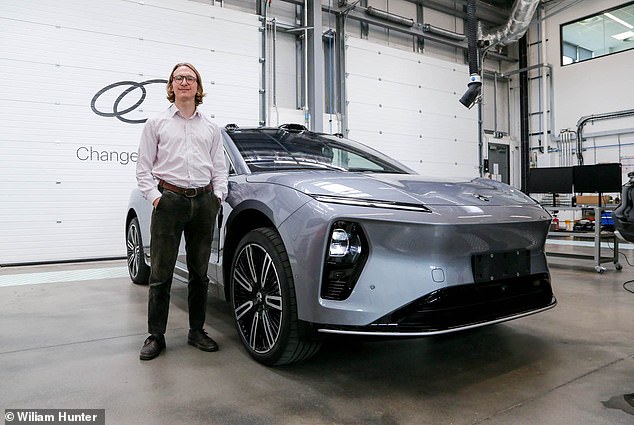The Future of Driving: ClearMotion’s Suspension System
For those who suffer from motion sickness, a trip on Britain’s winding back roads can quickly turn into an uncomfortable experience. However, a new innovation from ClearMotion, a Boston-based startup, may offer a solution to this long-standing issue. Their latest suspension technology claims to eliminate motion sickness by providing a smoother ride than ever before.
The system was tested in the luxury NIO ET9, where it functions like noise-cancelling headphones for the road. With compact motors above each wheel and an advanced onboard computer, the suspension can adjust to bumps and obstacles in real-time. This should reduce the swaying and shaking that typically causes nausea.
How Does It Work?
Unlike traditional passive suspension systems that rely on springs or airbags, ClearMotion uses active suspension. This means it adds power to the system, allowing it to respond more effectively to road conditions. When the wheels detect an obstacle, such as a speed bump, the motors quickly adjust the wheels to absorb the impact.
This approach is referred to as the “sky hook” method, where the car’s body remains level while the wheels move up and down to follow the road. Drivers can also customize their experience, choosing between a sporty feel or a smoother ride.
The Experience
During testing, the NIO ET9 equipped with ClearMotion’s suspension was put through various driving conditions, including winding back roads and a specialized test track. Initially, the ride felt smooth, but not as seamless as expected. However, when the active system was turned off, the difference became immediately apparent. The ride became bumpy and jarring, highlighting how effective the system is at reducing motion.
Switching the system back on restored the smoothness, making the car feel as if it were floating on a cloud. The contrast between the two modes was striking, showing just how much the suspension could improve the driving experience.
Limitations and Challenges
Despite its benefits, the system is not without limitations. Marco Giovanardi, ClearMotion Technical Fellow, explained that even the best active systems can only react to what they sense. If the road contains larger obstacles, the system may still struggle to provide a perfect ride.
To address this, ClearMotion is developing RoadMotion, a software that maps roads using GPS data and information from the suspension. This creates detailed maps of every bump and imperfection, allowing the car to anticipate road conditions and adjust accordingly.
RoadMotion: A Game-Changer
RoadMotion works by collecting data from the suspension and combining it with GPS information to create highly accurate road maps. Once a road is mapped, the system can locate the car with an accuracy of 1 cm, even in tunnels without GPS signals. This allows the suspension to plan its response proactively, reducing motion to a minimum.
Mr. Giovanardi compares RoadMotion to Shazam for the road, recognizing patterns in potholes rather than music. With enough data, the system can predict and adjust to road conditions before they are encountered.
Testing the System
At the HORIBA MIRA vehicle proving ground, the system was tested on a variety of challenging terrain, including slaloms, speed bumps, and French pavé. With RoadMotion activated, the car remained remarkably stable, feeling more like a rollercoaster than a typical vehicle.
One of the most impressive tests involved a set of sine-wave bumps designed to send cars airborne. At 50 mph, the car smoothly navigated the bumps without any noticeable disturbance, showcasing the system’s effectiveness.
Can It Prevent Motion Sickness?
The ultimate question is whether ClearMotion can truly prevent motion sickness. During testing, the reporter attempted to induce nausea by sitting in the back seat, reading, and closing their eyes. Surprisingly, the discomfort was minimal, suggesting that the system could be effective.
However, there is still room for improvement. CEO Christian Steinmann acknowledges that the system is currently in reactive mode, responding to the driver’s actions. His vision is for the system to be used in autonomous vehicles, where it can fully eliminate motion sickness by anticipating traffic conditions and adjusting accordingly.
Conclusion
ClearMotion’s suspension system represents a significant step forward in automotive technology. While it is not yet perfect, it offers a glimpse into a future where driving is more comfortable and less likely to cause motion sickness. As the technology continues to evolve, it could revolutionize the way we travel, making long journeys more enjoyable and less stressful.







